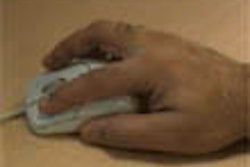LAKE TAHOE, NV - To take full advantage of multidetector CT, a radiology department needs capabilities that come only with PACS. And to do PACS right, you might have to skip a perfect ski day to learn from the experiences of others.
Fortunately for attendees at the American Healthcare Radiology Administrators (AHRA) Electronic Imaging conference last week, the 10 years of experience and research offered by Dr. Eliot Siegel competed well against a sunny view of azure waters surrounded by snow-capped peaks.
Not that Siegel's view is entirely sunny: Despite the many positive reports on PACS emanating from his Veterans Affairs hospital in Baltimore, the imaging chief acknowledged some missteps as well. But if others want to replicate the VA's success, they may need to artificially create some conditions for change.
MDCT is forcing the transition for many film-based facilities, Siegel noted, because the modality generates vast amounts of data and images that are best reconstructed by the radiologist at a reading workstation.
A single MDCT scan can now generate the data that previously required two or more specific exams (such as a CT angiogram, spine CT, and pulmonary CT), and the radiologist can choose what to look at on a variety of parameters.
"Multidetector (imaging) and the 3-D workstation remove the radiologist from the shackles of essentially having the thick sections in just the axial plane," Siegel said in a post-presentation interview with AuntMinnie.com. "It's going to mean relearning some of the anatomy for some of the radiologists, but I think it's going to be worth it."
Meanwhile, the change that MDCT brings to radiologists' practices also logically prompts a change in technologists' practices, he said.
"What we're doing is we're taking the functions off the scanner, away from the technologists, and essentially allowing the techs to scan and do advanced processing, such one might do for CT calcium scoring," Siegel said.
"For the typical visualization, it seems silly to have the techs have to spend extra time, extra space, and extra energy to reconstruct things that one can reconstruct locally at the workstation, and the radiologist can read faster and more flexibly," he said.
In that sense, MDCT may behave less like a modality and more like PACS: it can require great changes in the workflow of a radiology department. And Siegel said he believes one reason many facilities have rough transitions to PACS is because they treat it like just another machine.
"A lot of people trust the vendor to come in and deliver the system," Siegel said. For example, with digital radiography, the system is dropped in, someone comes in and does training on which button does what, and then they leave, he explained.
"To have someone come in, sit down with you, and help redesign the workflow in the department and the hospital -- that doesn't usually happen," he said. Worst of all is when radiologists continue running a film-based department while simultaneously making a glacial transition to PACS.
PACS and RIS also need to be integrated with hospital information systems, ordering packages, and more to succeed. "If you can't do that, then you're essentially not going to be significantly more effective than with a film-based department," Siegel said.
When the Baltimore VA became the world's first filmless (except for mammography) facility in 1993, it had the particular advantage of having designed a new medical center around the concept of enterprise-wide access. And after the clinicians heading other departments were interviewed on CNN as to how great the setup was, it was harder for them to complain later, Siegel quipped.
Radiology department productivity increased, he said, in part because clinicians could look at images and reports at their own workstations. The frequency of clinician consultations went from one for every 7.5 studies in 1993 to one for every 42.1 studies as of 1996.
Technologist productivity also increased by 40%, fueled in part by lower retake rates. A 25% reduction in full-time equivalent personnel, and the recouping of space that would have been used for film storage in downtown Baltimore, were the major cost savings with PACS, Siegel said, while film costs were a minor factor.
Electronic storage costs have also dropped considerably, Siegel said, dropping faster than the increases in image data being generated by MDCT and other modalities. The Baltimore VA has also experienced a larger increase in imaging exams per inpatient than other VA hospitals. If that increase was spurred by the digital conversion, it represents a potential downside for capitated reimbursement facilities like the VA, he added.
With depreciation of capital equipment, the VA's cost per imaging exam dropped over time. That would not have been the case with the old film-based system, Siegel said, where a doubling of volume would have meant a doubling of film storage and personnel.
But the main force that will drive departments to reinvent their practices is the need to cope with the increased volume generated by multidetector CT.
"If we're going to read studies in the same way we always did, it really negates the potential value of these multidetector scanners," Siegel said.
By Tracie L. ThompsonAuntMinnie.com staff writer
April 5, 2004
Related Reading
Prioritizing data with information life cycle management, April 1, 2004
SCAR members offer solutions for data deluge, February 24, 2004
Volumetric image review offers potential, challenges, June 27, 2003Copyright © 2004 AuntMinnie.com


















